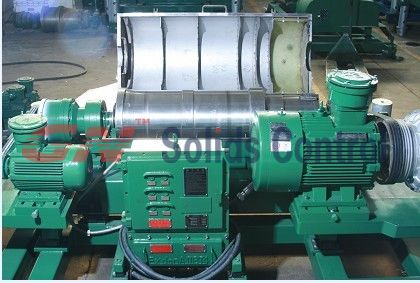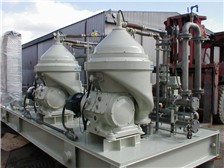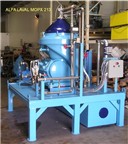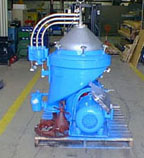Apr 30, 2010
The following is a statement by A.Q. Khan, the Pakistani entrepreneur who sold nuclear weapons internationally:
If you want to buy a thing, you place the order directly and you get it. If you don’t give me [the item] for one reason or another, I ask Tom, Dick or Harry [for] this item. Could you please buy it for me? Okay, no problem. It is a commercial deal. The guy buys from you. You are not willing to sell it to me, but you are willing to sell it to Tom. So, Tom buys from you. He takes ten or fifteen percent and he says to me that this is purely a business deal.1
On January 7, 1939, Niels Bohr, his son Erik, and Bohr’s assistant Léon Rosenfeld left Copenhagen for the United States. Four days earlier, the Austrian-born physicist Otto Frisch, who had taken refuge in Bohr’s Copenhagen Institute, had told Bohr about the work that he and his aunt Lise Meitner had just done in Sweden. Drawing on experiments by the radio chemists Otto Hahn and Fritz Strassman—Meitner’s former colleagues in Berlin—Meitner and Frisch showed that it was possible to split uranium nuclei by bombarding them with neutrons. Over the years I have spoken with several physicists who were active in 1939 when this discovery was made. All of them, including Bohr, could not understand why they had not predicted it themselves. Robert Serber, a physicist recruited for the Manhattan Project in 1941 who played an essential role at Los Alamos, said to me, “How could we have been so stupid?” This was the discovery that made nuclear weapons possible.
The uranium that Hahn and Strassman used in Berlin was natural uranium from a mine. It consisted of two predominant isotopes: uranium-238 and uranium-235. Isotopes of atoms have nuclei that contain the same number of protons but different numbers of neutrons; uranium-238 and uranium-235 differ by three neutrons. Over 99 percent of natural uranium is uranium-238, but Bohr realized that only the uranium-235 fissioned in these experiments. Moreover the process was such that any neutron—regardless of the amount of energy it contained—would cause a uranium-235 nucleus to split, while it took a minimum threshold of energy for a neutron to induce fission in uranium-238. Thus the distinction between “fissile” nuclei—U-235—and “fissionable” nuclei—U-238—was discovered.
As soon as uranium fission was considered for nuclear weapons, it was understood that the fissile isotope was the relevant one. I think that Bohr greeted this news with a sense of relief. Separating these isotopes was so difficult that, as he put it, it would take the resources of an entire country; and he felt that no country would devote its resources to it, so the notion of atomic weapons could be safely ignored.
In fact it took the resources of three countries to produce the bomb: the United States, Great Britain, and Canada. But there was more to it than that. In some sense it took some of the most valuable scientific talent of all Europe to do it. Consider this partial list: the Hungarians John von Neumann, Eugene Wigner, and Edward Teller; the Germans Hans Bethe and Rudolf Peierls; the Poles Stanisław Ulam and Joseph Rotblat; the Austrians Victor Weisskopf and Otto Frisch; the Italians Enrico Fermi and Emilio Segrè; Felix Bloch from Switzerland; and, from Denmark, the Bohrs, Niels and his son Aage. Almost none of these people went back to their native countries after the war, but people like Peierls and Frisch did return to England, their adopted country, and they and some others began work on making nuclear weapons there.
Proliferation was inevitable and had been predicted. What had not been predicted was the extent to which it would be abetted by espionage. The German-born physicist Klaus Fuchs, who had been part of the British delegation at Los Alamos and returned to England where he worked on nuclear weapons, gave the Russians what was essentially the blueprint of the bomb the US used at Nagasaki. He is in the unique position of having helped three countries build nuclear weapons. Nor did anyone foresee that proliferation of nuclear weapons would become a commercial enterprise, which is the situation that we find ourselves in at the present time.
At the center of this activity is the Pakistani metallurgist A.Q. Khan and his collaborators. A great deal has been written about them—including by me in these pages2—but I have never found an account as detailed as the one in Peddling Peril: How the Secret Nuclear Trade Arms America’s Enemies, by the nuclear armaments expert David Albright. Albright holds master’s degrees in physics and mathematics and has taught physics. For five years—between 1992 and 1997—he was part of the International Atomic Energy Agency’s Action Team and in that capacity he spent time as a weapons inspector in Iraq. In 1993, he founded the Institute for Science and International Security, a nonprofit research organization based in Washington, D.C., of which he is president.3
In short, Albright is a perfect person to write a book like this. As he recounts, Kahn’s first customer outside Pakistan was Iran. By 1984 the Islamic Republic had decided that it needed gas centrifuges to enrich uranium, which Iranian officials knew had been done by Pakistan. Masud Naraghi, an Iranian engineer with a Ph.D. in plasma physics from Case Western Reserve University in Cleveland, was given the job of buying the necessary information and equipment from somewhere.
Needless to say, the “somewhere” was the network of suppliers that Khan had set up. One of these was a firm in Cologne called Leybold-Heraeus. Among other things, this company had devised a way to place centrifuges in a vacuum to reduce friction, so that the rotors in them could spin faster than the speed of sound. The company had managed to get some of this equipment to Kahn by the usual tactic of claiming that it was “dual use”—i.e., that it had civilian applications—or by shipping it to dummy companies in places like Dubai that had lax or nonexistent export and import regulations. Naraghi seemed to know enough about the Pakistani program to arrange visits to the Leybold plant in Cologne. One of the people he met there was a German engineer named Gotthard Lerch.
Lerch was a perfect collaborator. He had absolutely no scruples about selling anything to anybody as long as he could skim a percentage of the sale. He also understood what Naraghi wanted without Naraghi having to say anything about centrifuges, let alone what they were going to be used for, which gave everyone involved deniability. Lerch presented Naraghi with an entire menu of centrifuge parts to choose from. In February 1987, the Iranian government secretly signed a deal (approved by then Prime Minister Mir Hossein Moussavi) to get some used Pakistani centrifuges of the P1 design, as well as the plans for the P2 centrifuge, the P1’s successor.
The Iranians paid between five and ten million dollars, of which Lerch got the lion’s share and his sources in Pakistan the rest. The unanswered question is whether the package also included the Chinese design for a nuclear weapon that Khan had obtained. Most people I have asked are quite sure that it did. In any event this sale became the basis of Iran’s uranium enrichment program.
In the fall of 1990, shortly before the Gulf War, Iraq had some dealings of its own with Khan. Little came of them, although Albright notes that during the 1980s Baghdad had previously been able to obtain “large quantities of technology, equipment, and materials for Iraq’s nuclear programs from a range of countries including Britain, Germany, Switzerland, Austria, Japan, Brazil, and the United States.” However, as Hans Blix, the former chief weapons inspector for the United Nations, has repeatedly stated, UN weapons inspectors concluded from their own inspections in Iraq that the program was dismantled shortly after the Gulf War. “[Iraq’s weapons] were destroyed in 1991,” Blix told Tim Russert on Meet the Press in 2006.
Libya was another matter. In 1997, after some maneuvering, Libya finally bought a package from the Khan network for somewhere between one and two hundred million dollars. The deal included ten thousand P2 centrifuges, which, if they had been installed, could have produced about a hundred kilograms of weapons-grade uranium per year, enough for several weapons of the Chinese design that the Libyans also bought from Iran (a device in which attached hemispheres of fissile material would be imploded using high explosives). Needless to say the Libyans tried to conceal all this but it was revealed in 2003 when some centrifuge parts were shipped from Dubai aboard a German ship, the BBC China. Because some members of the Khan network had been turned, the CIA knew about this shipment and an American naval vessel trailed the ship. The captain was persuaded to dock in the Italian port of Taranto. The ship was searched, and the illicit cargo seized. This persuaded Colonel Qaddafi that there was no future in nuclear weapons and he turned what he had received from the Khan network over to the CIA. The network itself was dismantled although, as Albright writes, one cannot be sure that all of the companies and arms dealers involved in it have been shut down.
One of the places where the unraveling of the Khan network took place was South Africa. The history of nuclear weapons in South Africa is so interesting that Albright has said that it will be the subject of his next book. He devotes a chapter to it here. When Tom Lehrer wrote his song in 1965, he had no way of knowing that nine years later the South Africans would begin a nuclear program for what they said were “peaceful applications.”4 It soon openly morphed into a program for making nuclear weapons.
There were at the time 50,000 foreign troops in Angola and considerable racial unrest in South Africa itself; in his song Lehrer wrote, “South Africa wants two, that’s right: One for the black and one for the white.” At the time nothing in South Africa escaped race. Only South African–born white citizens were allowed to work on the actual weapons design. A South African scientist connected with the nuclear program told me that naturalized white South Africans were allowed to work on uranium enrichment while black South Africans mined the uranium. source: www.nybooks.com












